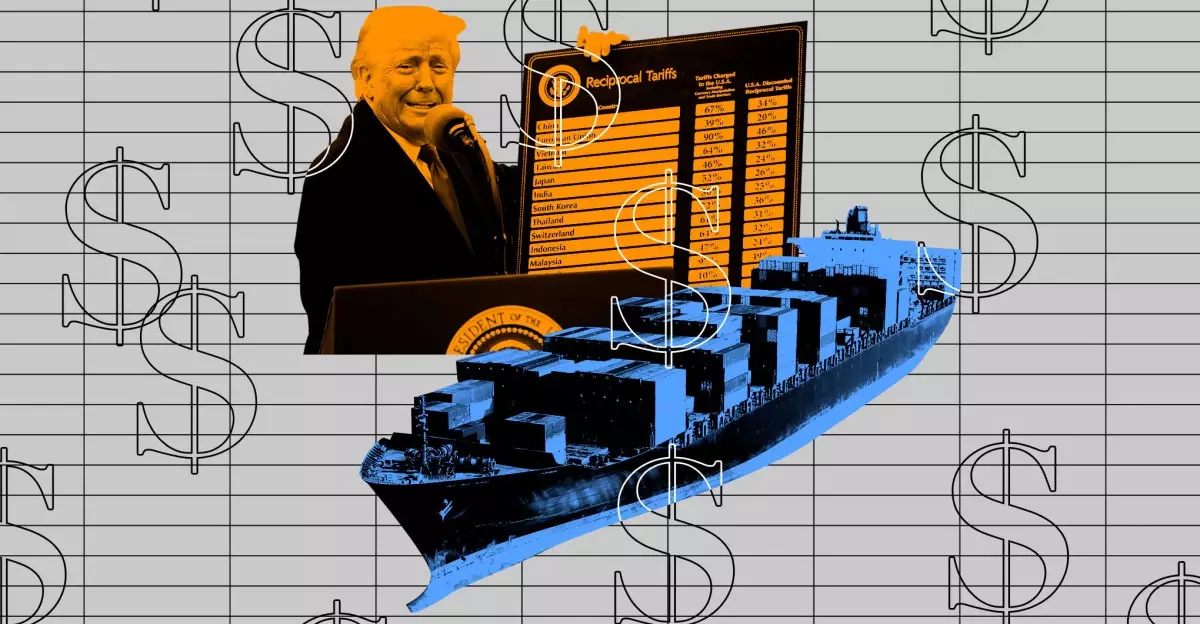The recent revisions by U.S. Customs and Border Protection (CBP) regarding tariffs on consumer technology imports mark a pivotal turning point in the complex landscape of international trade, particularly in relation to China. While the U.S. tech sector has long been embroiled in the contentious atmosphere of tariff regulations, the new guidelines create a cautious sense of optimism among manufacturers, retailers, and consumers alike. The exemptions for smartphones, laptops, and critical components from the punitive tariffs implemented during the twilight of the Trump administration signal an nuanced approach to tech imports that could reshape the market dynamics.
In a development highlighted by Bloomberg, these updates clarify the recent changes in tariff structure, especially concerning electronics. By excluding many essential tech devices from the harsh 125 percent tariff, the U.S. government demonstrates a commendable effort to ease the financial burden associated with consumer technology while simultaneously navigating the intricacies of international trade tensions. This decision comes at a time when consumers are eager for innovation but wary of price increases that hinder accessibility to the latest technology.
The Economic Implications of Tariff Exemptions
The implications of these exemptions extend beyond mere pricing; they offer a broader narrative regarding the future of U.S.-China trade relations. Historical patterns have illustrated how tariff policies can impact consumer behavior and corporate strategies, and the recent updates may help mitigate some adverse effects seen in recent years. For companies like Sony and Nintendo, the uncertainty surrounding tariffs has influenced their pricing and supply chain strategies. Sony reportedly adjusted its pricing on new television models, a move that some analysts attribute directly to anticipated tariff costs.
This proactive approach from the government suggests a recognition of the delicate balance between protecting domestic industries and fostering economic growth through affordable technology. The move to exempt key consumer electronics from tariffs potentially mitigates price hikes for consumers, ensuring that the tech landscape remains competitive and dynamic.
However, it’s essential to understand that these exemptions are not a blanket solution for all products. While specific devices are now protected, other tariffs remain in place, especially those intended to pressure China over various geopolitical issues, including drug trafficking. Such a multifaceted approach could lead to further complications, as businesses must now navigate a patchwork of regulations that vary in regard to different product categories.
The Corporate Response: Navigating Trade Waters
Technology companies are not waiting idly for clarity on tariff regulations; they are actively adjusting their strategies. Reports indicate that Apple rushed shipments of iPhones from India in anticipation of these tariff changes, highlighting their need to adapt quickly to government policies. Similarly, Nintendo’s decision to delay U.S. preorders for the much-anticipated Switch 2 reflects a cautious approach amidst the shifting trade landscape.
The reality is that the implications of these exemptions will ripple through the corporate sector, compelling companies to re-evaluate their source and distribution strategies to minimize potential losses related to tariffs. As businesses recalibrate, they must also weigh the risks of fluctuating tariffs while attempting to meet consumer expectations in terms of price and innovation. The strategic movements of these corporations hint at an understanding that flexibility and foresight are essential in navigating the unpredictable nature of international trade.
Consumer Impact: A Double-Edged Sword
For consumers, the introduction of tariff exemptions for tech imports brings mixed feelings of optimism and skepticism. On one hand, the reduced tariffs may alleviate the financial pressures of acquiring new technology, spurring market demand and innovation. On the other hand, there remains uncertainty surrounding how and when these benefits will trickle down to end-users. Price adjustments do not always align with government policy changes, and the impact on consumer wallets may not be immediately observable.
Furthermore, consumers must stay vigilant. Companies might inflate prices in anticipation of tariffs, as seen with various electronics manufacturers, leaving customers questioning the authenticity of savings promised by tariff exemptions. Transparency should be a priority for companies aiming to regain consumer trust; proactive communication regarding pricing strategies can build confidence among buyers in an increasingly confusing market.
While the updated U.S. Customs and Border Protection guidance represents a meaningful step towards rationalizing technology imports, the intricacies of tariff exemptions showcase the maze that both corporations and consumers must navigate. The outcome of these developments on the U.S.-China trade relationship and the long-term implications for the tech ecosystem remain to be seen, but one thing is clear: vigilance and adaptability will be crucial in this evolving landscape.


Leave a Reply